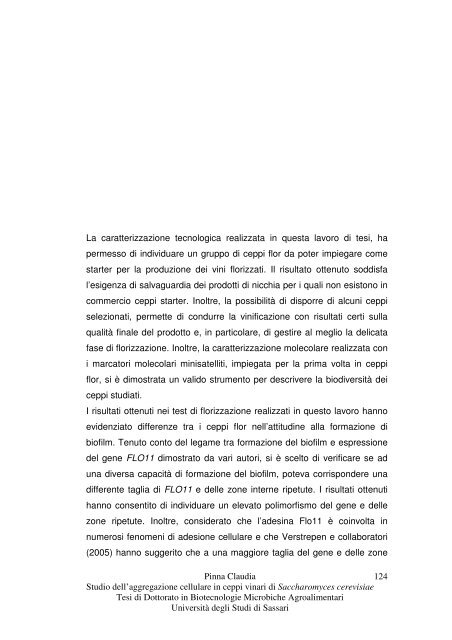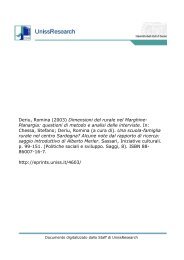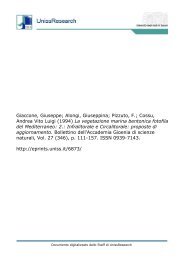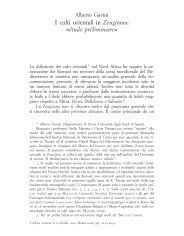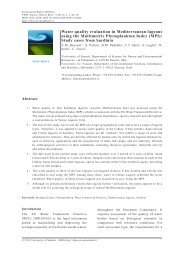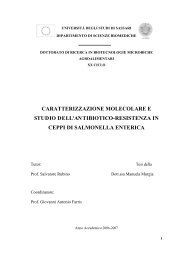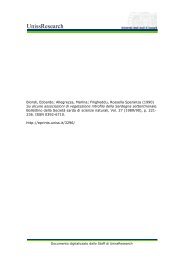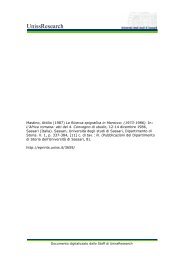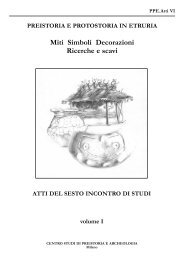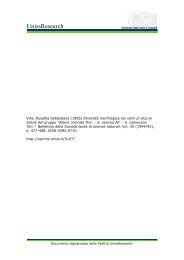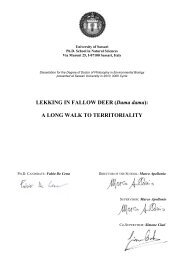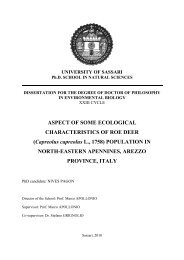Studio dell'aggregazione cellulare in ceppi vinari di Saccharomyces ...
Studio dell'aggregazione cellulare in ceppi vinari di Saccharomyces ...
Studio dell'aggregazione cellulare in ceppi vinari di Saccharomyces ...
You also want an ePaper? Increase the reach of your titles
YUMPU automatically turns print PDFs into web optimized ePapers that Google loves.
La caratterizzazione tecnologica realizzata <strong>in</strong> questa lavoro <strong>di</strong> tesi, ha<br />
permesso <strong>di</strong> <strong>in</strong><strong>di</strong>viduare un gruppo <strong>di</strong> <strong>ceppi</strong> flor da poter impiegare come<br />
starter per la produzione dei v<strong>in</strong>i florizzati. Il risultato ottenuto sod<strong>di</strong>sfa<br />
l’esigenza <strong>di</strong> salvaguar<strong>di</strong>a dei prodotti <strong>di</strong> nicchia per i quali non esistono <strong>in</strong><br />
commercio <strong>ceppi</strong> starter. Inoltre, la possibilità <strong>di</strong> <strong>di</strong>sporre <strong>di</strong> alcuni <strong>ceppi</strong><br />
selezionati, permette <strong>di</strong> condurre la v<strong>in</strong>ificazione con risultati certi sulla<br />
qualità f<strong>in</strong>ale del prodotto e, <strong>in</strong> particolare, <strong>di</strong> gestire al meglio la delicata<br />
fase <strong>di</strong> florizzazione. Inoltre, la caratterizzazione molecolare realizzata con<br />
i marcatori molecolari m<strong>in</strong>isatelliti, impiegata per la prima volta <strong>in</strong> <strong>ceppi</strong><br />
flor, si è <strong>di</strong>mostrata un valido strumento per descrivere la bio<strong>di</strong>versità dei<br />
<strong>ceppi</strong> stu<strong>di</strong>ati.<br />
I risultati ottenuti nei test <strong>di</strong> florizzazione realizzati <strong>in</strong> questo lavoro hanno<br />
evidenziato <strong>di</strong>fferenze tra i <strong>ceppi</strong> flor nell’attitud<strong>in</strong>e alla formazione <strong>di</strong><br />
biofilm. Tenuto conto del legame tra formazione del biofilm e espressione<br />
del gene FLO11 <strong>di</strong>mostrato da vari autori, si è scelto <strong>di</strong> verificare se ad<br />
una <strong>di</strong>versa capacità <strong>di</strong> formazione del biofilm, poteva corrispondere una<br />
<strong>di</strong>fferente taglia <strong>di</strong> FLO11 e delle zone <strong>in</strong>terne ripetute. I risultati ottenuti<br />
hanno consentito <strong>di</strong> <strong>in</strong><strong>di</strong>viduare un elevato polimorfismo del gene e delle<br />
zone ripetute. Inoltre, considerato che l’ades<strong>in</strong>a Flo11 è co<strong>in</strong>volta <strong>in</strong><br />
numerosi fenomeni <strong>di</strong> adesione <strong>cellulare</strong> e che Verstrepen e collaboratori<br />
(2005) hanno suggerito che a una maggiore taglia del gene e delle zone<br />
P<strong>in</strong>na Clau<strong>di</strong>a<br />
124<br />
<strong>Stu<strong>di</strong>o</strong> dell’aggregazione <strong>cellulare</strong> <strong>in</strong> <strong>ceppi</strong> v<strong>in</strong>ari <strong>di</strong> <strong>Saccharomyces</strong> cerevisiae<br />
Tesi <strong>di</strong> Dottorato <strong>in</strong> Biotecnologie Microbiche Agroalimentari<br />
Università degli Stu<strong>di</strong> <strong>di</strong> Sassari


